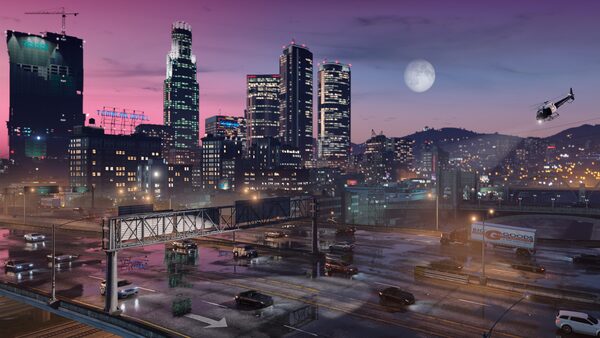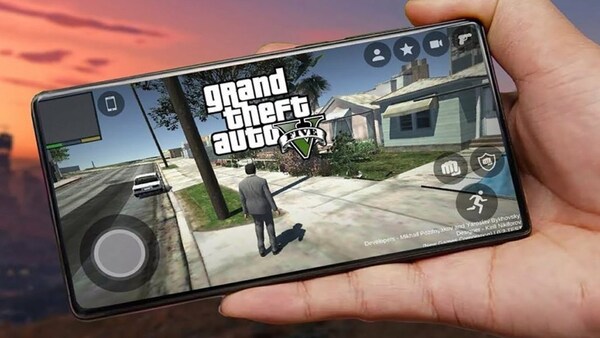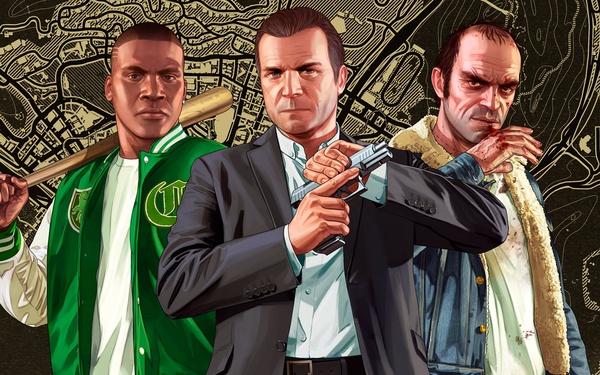Popular Now
Since its release in 2013, Grand Theft Auto V has set the standard for open-world games with its sprawling map, engaging storyline, and lively cityscapes. Despite its many accolades, GTA V harbors a long-standing flaw that has frustrated players and modders alike: the limited artificial intelligence (AI) of non-playable characters (NPCs). While these characters are meant to simulate a living, breathing city, their predictable and sometimes bizarre behaviors break immersion and limit gameplay potential. This article explores the depth of this issue, from its roots in game design to its implications for future Rockstar titles.
The Foundation of GTA V’s NPC System
Understanding Rockstar's Design Philosophy
From the outset, Rockstar aimed to create a rich urban simulation where NPCs would respond dynamically to the player’s actions. To achieve this, they implemented a rule-based AI framework, where each character acts according to a set of predefined responses based on environmental triggers. For example, an NPC may flee when gunshots are heard or become aggressive if bumped repeatedly.
The Limits of Predefined Behavior
However, this design also limits NPCs to a fixed number of outcomes. There is little variation between one encounter and the next, making the city feel less responsive over time. Once players understand the "rules" of NPC behavior, much of the initial magic wears off, revealing a rather static system dressed up as a dynamic world.
NPC Pathfinding and Environmental Awareness
Why Characters Walk Into Traffic
Pathfinding is one of the most glaring issues when observing NPCs. Characters often walk into oncoming traffic, fail to avoid obstacles, or take unnatural detours. This issue arises from limited environmental scanning and poor real-time adjustment algorithms.
Consequences in Gameplay
Poor pathfinding doesn’t just break immersion—it also hinders gameplay. Missions that rely on following or chasing NPCs can become frustrating when AI-controlled characters act erratically or fail to navigate terrain logically, sometimes even leading to mission failure through no fault of the player.
NPC Combat AI: A Missed Opportunity
Gunfights Without Intelligence
One would expect that enemy AI in a crime-based game would be smart, aggressive, and tactical. Yet, in GTA V, most NPCs in combat follow predictable patterns: duck behind cover, pop up at regular intervals, and rush blindly when close to death.
Lack of Adaptive Behavior
Combat lacks any semblance of strategic thinking. NPCs do not flank, retreat, or call for reinforcements in a smart way. The AI fails to adapt to player strategies, making even the most intense gunfights feel like repetitive shooting galleries.
Police AI: Overpowered But Not Intelligent
The Illusion of Authority
At first glance, GTA V's police AI appears more sophisticated. They coordinate in chases, set up roadblocks, and escalate force based on player notoriety. But this behavior is more a function of scripted escalation than true intelligence.
Exploitable Loops
Players quickly learn how to exploit the system—hiding in alleyways, escaping to rooftops, or simply driving in circles. The police rarely adapt to these tactics, making it easy to break pursuit despite a supposed high-alert state.
Traffic AI and Vehicular Behavior
Unnatural Driving Patterns
Vehicle-driving NPCs are often robotic in their responses. They stop at every red light, regardless of emergencies, and rarely react appropriately to obstacles or erratic player behavior. Even in high-speed chases or city-wide chaos, traffic AI continues to obey outdated rules.
Script Over Simulation
The vehicular AI is not driven by situational awareness but by scripted behavior paths. This results in awkward scenarios where cars pile up behind a burning wreck or continue to follow a route that no longer exists due to a roadblock.
The Limitations of Memory and State Tracking
Short-Term Memory AI
A major reason for the lack of believable behavior is that most NPCs have short-term state memory. Once they exit the player’s immediate field of view, they reset. This affects immersion, particularly when chasing characters or causing mayhem in one area only to return moments later to find everything reset.
Technical Reasons and Performance Tradeoffs
This limitation stems partly from performance concerns. Keeping thousands of AI states in memory across the city would strain consoles and older PCs. However, it highlights a fundamental tension between technical feasibility and immersive simulation.
NPC Reactions to Game Events
Context-Free Reactions
NPCs don’t truly react to the game world in context. Explosions, gunfire, or police chases might elicit a brief scream or flight response, but they lack nuanced reactions. No one tries to help the injured, call the authorities with context, or form mobs or protests in response to violence.
Static World Consequences
This means that even when major story events unfold—like a bombing or heist—the rest of the world goes on as if nothing happened. This discrepancy between scripted narrative and dynamic world breaks immersion and reduces stakes.
Implications for GTA VI and the Future of AI
Lessons Rockstar Must Learn
With GTA VI on the horizon, Rockstar has a unique opportunity to address the shortcomings of GTA V's AI systems. The increasing power of next-gen consoles and PC hardware allows for more complex simulations and persistent NPC states.
Recommendations for Improved AI
To truly evolve the series, Rockstar should:
-
Implement long-term memory systems: Allow NPCs to recall past interactions with the player.
-
Enable emergent behavior: Let AI adapt to unpredictable events with more than a single response.
-
Create meaningful group dynamics: NPCs should influence each other and act collectively when appropriate.
-
Improve pathfinding and situational awareness: Especially for law enforcement and mission-critical characters.

Conclusion: A Living City in Name Only
Despite its surface polish and technical achievements, GTA V’s NPC AI reveals a city that is more diorama than simulation. Characters lack memory, context, and adaptability, which ultimately undermines the illusion of a living world. While the game remains a landmark in open-world design, its AI systems are a relic of an earlier era—predictable, exploitable, and shallow.
As Rockstar moves toward the next generation of open-world experiences, fixing these AI issues is not just a technical upgrade—it’s a necessity for building a truly immersive and responsive world. If GTA VI wants to be more than a visual upgrade, its NPCs must think, feel, and remember—not just react.

















